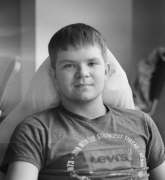

Partitioning with pg_pathman
Partitioning is a long-awaited feature in PostgreSQL. Although Postgres supports partitioning via inheritance, this approach has some disadvantages, such as the need to manually create partitions and support triggers, significant planning overhead, and no query execution optimizations. In this talk, we’ll tell you about the pg_pathman extension we are developing. pg_pathman supports HASH and RANGE partitioning, performs planning and execution optimizations, supports fast insert by using Custom Node instead of triggers, provides functions for partition management (add, split, merge, etc.), supports FDW, non-blocking data migration, and more. We'll also speak about pg_pathman integration with Postgres Pro Enterprise Edition and Oracle-like syntax support for partitioning. Finally, we'll discuss new partitioning capabilities in PostgreSQL 10, the already implemented features and further development plans.